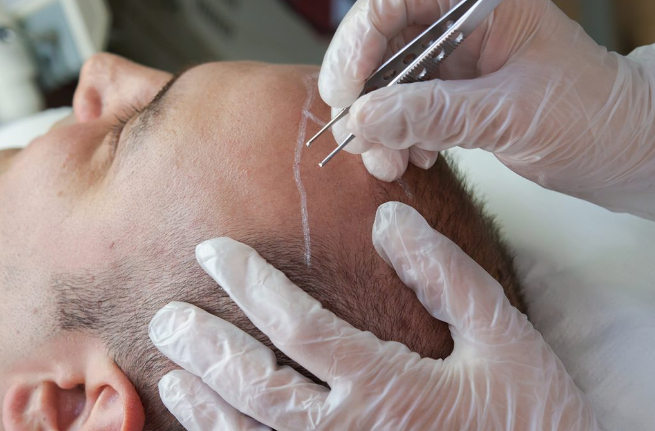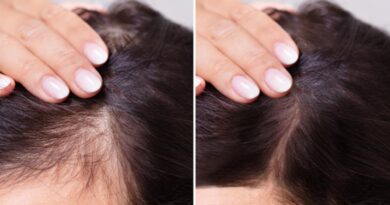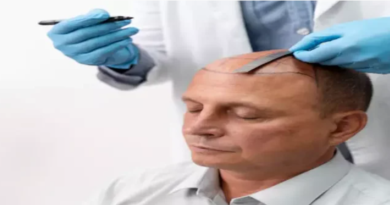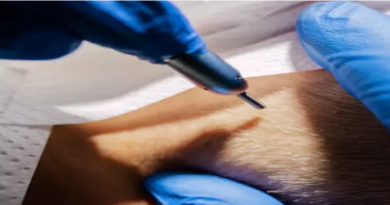FUE, FUT and DHI Hair Transplant Procedure Differences
What are the Differences Between FUE, FUT, and DHI Hair Transplant?
The main differences between FUE (Follicular Unit Extraction), FUT (Follicular Unit Transplantation) and DHI Hair Transplant techniques are as follows:
FUT Hair Transplantation: This technique is a method in which hair follicles are cut into a strip and then transplanted to the bald area. The FUT method is a more invasive method and the healing process may be longer. It also requires a large cut in the scalp and the suture marks may be more obvious.
FUE Hair Transplantation: This technique is a method in which individual hair follicles are collected using micro needles or punches and then transplanted to the bald area. The FUE method is a less invasive method and the recovery period is shorter. Also, there are no suture marks and may leave less visible scarring.
DHI Hair Transplant: This is a method in which individual hair follicles are transplanted directly to the balding area using a special device. The DHI method is similar to the FUE method but uses a different implantation method. This method has a less traumatic and faster recovery process.
In general, the difference between FUT and FUE hair transplantation methods is how the hair follicles are collected. FUT involves cutting hair follicles into a strip, while FUE involves collecting individual hair follicles. The DHI method is similar to the FUE method but uses direct implantation and is a less invasive method. Which method will be preferred depends on the needs of the person, the hair type, the factors causing hair loss, the number of grafts and the experience of the hair transplant center.
FUT Hair Transplant Method Procedure
FUT (Follicular Unit Transplantation) hair transplantation is a surgical procedure usually performed under local anesthesia and consists of the following steps:
Determination of the Donor Area: The hairy area on the back and side, called the donor area, is determined. This region is the most suitable region for planting as the hair follicles are thicker and more durable.
Removal of Grafts from the Donor Area: The surgeon uses a surgical blade that cuts the scalp from the donor area into a strip. This strip is then divided into grafts containing hair follicles.
Preparation of Grafts: The grafts taken are separated under the microscope. Grafts are grouped and prepared according to the natural grouping of hair follicles.
Preparation of the Recipient Area: The recipient area to be transplanted is anesthetized with local anesthesia. The surgeon determines the small holes where the hair follicles will be opened in the recipient area.
Transplanting Grafts: The surgeon places the prepared grafts individually or in groups into the drilled holes. This process is done with care to imitate the natural angles of the hair follicles.
Healing Process: After hair transplantation, the area may show slight swelling and tenderness for a few days. The healing process can range from a few days to a week. After about two weeks, the stitches are removed.
FUT hair transplantation is a more invasive method than FUE hair transplantation and the healing process may be longer. However, it is possible to obtain more grafts in larger hair transplantations.
FUE Hair Transplant Method Procedure
FUE (Follicular Unit Extraction) hair transplantation is a surgical procedure usually performed under local anesthesia and consists of the following steps:
Determination of the Donor Area: The hairy area on the back and side, called the donor area, is determined. This region is the most suitable region for planting as the hair follicles are thicker and more durable.
Removing Hair Follicles: The surgeon removes individual hair follicles from the donor area using a device called a micromotor. Each follicle is removed one by one and then divided into small pieces of scalp called grafts.
Preparation of the Recipient Area: The recipient area to be transplanted is anesthetized with local anesthesia. The surgeon determines the small holes where the hair follicles will be opened in the recipient area.
Transplanting Grafts: The surgeon places the prepared grafts individually or in groups into the drilled holes. This process is done with care to imitate the natural angles of the hair follicles.
Healing Process: After hair transplantation, the area may show slight swelling and tenderness for a few days. The healing process can range from a few days to a week. After about two weeks, the crusting falls off and the transplanted hair starts to grow naturally.
FUE hair transplantation is a less invasive method than FUT hair transplantation and the recovery period is shorter. It also leaves a less visible scar and can provide a more natural result. However, it is possible to obtain fewer grafts in smaller hair transplants.
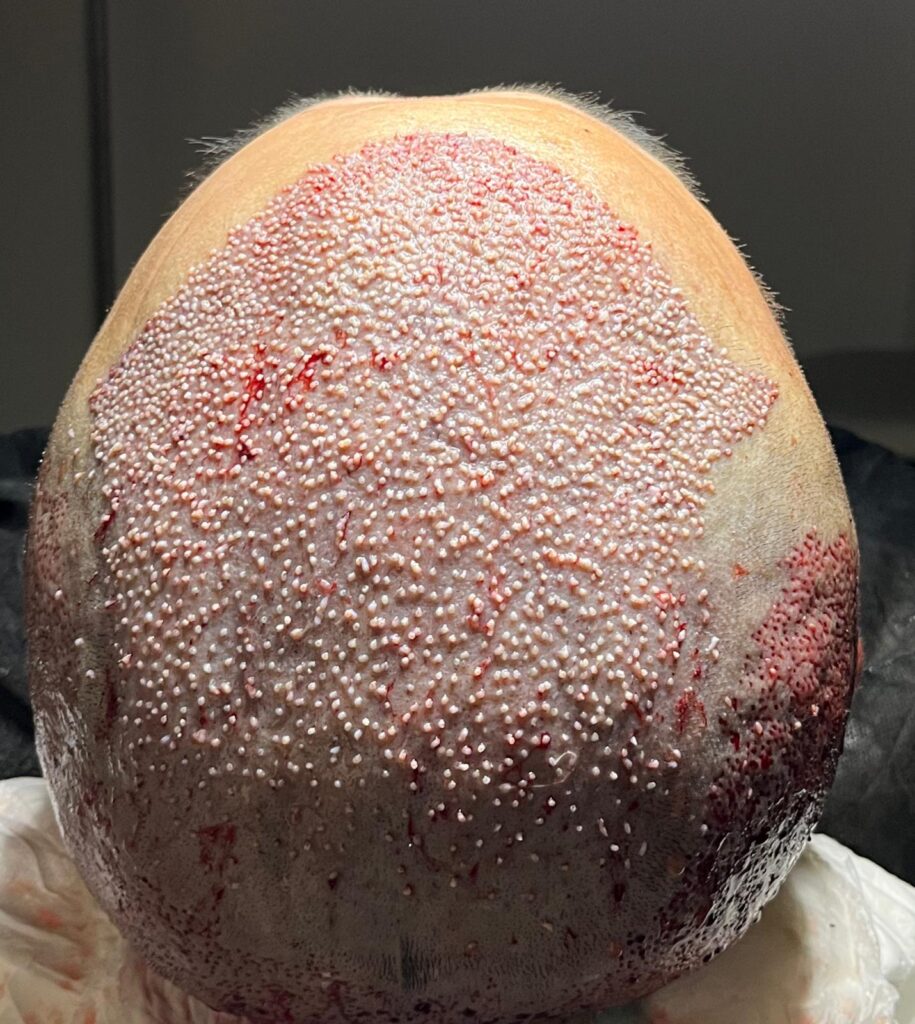
DHI Hair Transplant Method Procedure
The DHI hair transplant (Direct Hair Implantation) method is similar to the FUE method but has some differences. DHI hair transplantation consists of the following steps:
Determination of the Donor Area: The hairy area on the back and side, called the donor area, is determined. This region is the most suitable region for planting as the hair follicles are thicker and more durable.
Removal of Hair Follicles: The surgeon removes individual hair follicles with the FUE method. Each follicle is removed one by one and then divided into small pieces of scalp called grafts.
Preparation of the Recipient Area: The recipient area to be transplanted is anesthetized with local anesthesia. The surgeon determines the small holes where the hair follicles will be opened in the recipient area.
Preparation of Implanter Stifts: In the DHI Hair Transplant method, each graft hair follicle is taken one by one using a special device and placed directly on the hairy area. These devices are called implanter stacks.
Transplantation of Grafts: The surgeon places the hair follicles individually or in groups into the holes drilled using the prepared implanter stacks. This process is done with care to imitate the natural angles of the hair follicles.
Healing Process: After hair transplantation, the area may show slight swelling and tenderness for a few days. The healing process can range from a few days to a week. After about two weeks, the crusting falls off and the transplanted hair starts to grow naturally.
DHI Hair Transplant is a less invasive method compared to FUE and FUT methods. Thanks to the implanter stacks, it is easier to place the hair follicles at the right angle and direction. In addition, it is possible to make more intensive hair transplantation with the DHI method. However, the DHI method may have a longer processing time and be more expensive than the FUE method.
What Makes the DHI Method Better?
DHI hair transplantation (Direct Hair Implantation) method is a more modern method compared to the FUE method and has some advantages. Here are some features that make the DHI method better:
Direct Placement of Grafts: The DHI Hair Transplant method uses implanter stacks, a special device that allows each hair follicle to be placed one by one. In this way, the placement of the grafts at the right angle and direction can be done more easily and precisely.
Higher Graft Orientation: The DHI Hair Transplant method allows the hair follicles to be placed more firmly. This allows you to have a denser and more natural hairline.
Faster Healing Process: DHI Hair Transplant method is a less traumatic method due to direct placement of hair follicles. This can speed up the healing process and reduce the feeling of pain and discomfort.
Less Scarring: The DHI Hair Transplant method involves removing hair follicles one by one like the FUE method, but it is done in a less invasive way. This leaves less marks.
Short Processing Time: The DHI Hair Transplant method has a similar processing time to the FUE method, but it can also be a faster process due to the direct placement of the hair follicles.
These features make the DHI Hair Transplant method more advantageous than the FUE and FUT methods. However, each hair transplant method has its own advantages and disadvantages. Therefore, it is important to consult your doctor when making a hair transplant decision.
You can benefit from the privileges by contacting us.
- Best price guarantee
- You will not encounter hidden payments.
- Free transfer to airport, hotel or hospital
- Accommodation is included in the package prices.

